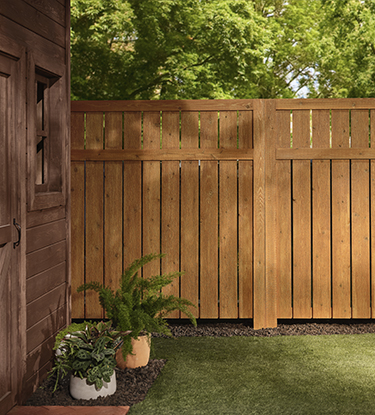Elevate Your Outside Space with Specialist Fence Staining Services!
Elevate Your Outside Space with Specialist Fence Staining Services!
Blog Article
Just How to Select the Right Fence Spot for Your Building
When it comes to enhancing the appearance and durability of your building's fence, selecting the best stain is a critical decision that requires mindful factor to consider. How can you ensure that you choose the perfect fence stain that straightens with your building's design and maintenance needs?
Recognizing Timber Types
To choose the suitable fence stain, it is necessary to have a thorough understanding of the different kinds of wood generally made use of for fence. When picking a fencing tarnish, it is vital to consider the type of timber being made use of to make sure compatibility and optimum protection. Understanding the qualities of different wood types will help you make an educated decision when it comes to choosing the right fence discolor for your residential property.
Selecting the Right Color
Choosing a proper shade for your fence tarnish is an important decision that considerably impacts the overall aesthetic charm of your building. The shade you pick need to match the design of your home, blend harmoniously with the environments, and show your personal taste. When picking a color, consider the existing shade combination of your residential or commercial property. For a natural appearance, earthy tones like browns, eco-friendlies, or grays function well. These colors can help the fencing blend into the landscape and develop a cohesive look. If you choose an even more contemporary or vibrant look, consider deciding for darker shades like black or deep charcoal for a striking comparison. Lighter colors such as whites or light grays can make a fencing show up larger and add a touch of style to your residential or commercial property. Ultimately, the best color selection will certainly enhance the beauty of your fence and elevate the general aesthetic allure of your home.

Considering Openness Degrees
When choosing the best shade for your fencing stain, another crucial aspect to take into consideration is the level of transparency that will certainly ideal Website fit your residential property's visual and maintenance demands. Openness degrees in fence discolorations normally drop into three classifications: clear, semi-transparent, and solid. Take into consideration the degree of exposure your fence deals with, the desired upkeep frequency, and the aesthetic you want to achieve when picking the right transparency degree for your fencing stain.
Reviewing Maintenance Needs
Thinking about the longevity and upkeep of your fence, evaluating the maintenance demands is critical in figuring out the most appropriate fence discolor for your residential or commercial property. The level of upkeep required for your fencing can differ depending upon variables such as the type of wood, weather conditions in your area, and your personal preferences.
When examining maintenance demands, it is necessary to think about the longevity of the fencing discolor. Some discolorations call for even more regular reapplication than others, so choosing a stain with a longer lifespan can help reduce the total upkeep demands of your fence (Fence Staining). Additionally, elements such as resistance to UV rays, water, and mold can impact just how often you require to re-stain your fence

Examining Examples Before Application
Before applying any kind of fence discolor, it is suggested to carry out example tests to guarantee compatibility with the wood and desired visual outcome. Checking examples enables you to assess how the discolor will engage with the details type of wood used in your fencing, as different timbers can take in stains in different ways. To begin, select a small low-profile area of the fence to apply the tarnish samples.
Final Thought
To conclude, picking the suitable fencing stain for your residential property includes understanding the wood type, choosing the best shade, considering transparency degrees, examining upkeep requirements, and testing samples prior to application (Fence Staining Service). By taking these aspects into factor to consider, you can make certain that your fencing tarnish matches your residential property while supplying the necessary protection and resilience. Make a notified choice to enhance the look and longevity of your fence
Report this page